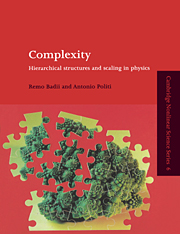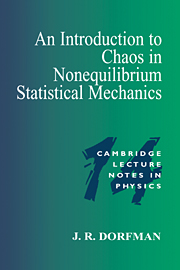Complexity
This is a comprehensive discussion of complexity as it arises in physical, chemical and biological systems, as well as in mathematical models of nature. The aim of this book is to illustrate the ways in which complexity manifests itself and to introduce a sequence of increasingly sharp mathematical methods for the classification of complex behavior. This book will be of interest to graduate students and researchers in physics (nonlinear dynamics, fluid dynamics, solid-state, cellular automata, stochastic processes, statistical mechanics and thermodynamics), mathematics (dynamical systems, ergodic and probability theory), information and computer science (coding, information theory and algorithmic complexity), electrical engineering and theoretical biology.
- Mathematical tools presented in uniform, self-consistent way
- Rich collection of pictures and fully worked-out examples, many of which contain new analytical or numerical results
- Physical investigation of formal languages and automata presented for the first time
Reviews & endorsements
"The approach throughout is no-nonsense...for a mathematically mature reader determined to ponder what complexity might mean, this book will provide some rewarding exercise." Nature
"The book presents a comprehensive review of the results which have been achieved in the understanding of the phenomenon of complexity and its quantitative description." Mathematical Reviews
"...focused on the formal description of complex systems...the authors discuss a great number of ideas developed in the field of complex systems and complexity....Those working on complexity theory will find this book an invaluable source since it offers a great number of stimulating ideas and guidance for future research." Journal of Statistical Physics
"It is the definitive source for complexity in physical systems. Scientists and graduate students working or interested in this new field, especially physicists, mathematicians and theoretical computer scientists will find this book of value." Pageoph
Product details
August 1999Paperback
9780521663854
336 pages
247 × 175 × 17 mm
0.665kg
56 line figures 5 halftones 1 table
Available
Table of Contents
- Part I. Phenomenology and Models:
- 1. Introduction
- 2. Examples of complex behaviour
- 3. Mathematical models
- Part II:
- 4. Symbolic representations of physical systems
- 5. Probability, ergodic theory, and information
- 6. Thermodynamic formalism
- Part III. Formal Characterization of Complexity:
- 7. Physical and computational analysis of symbolic signals
- 8. Algorithmic and grammatical complexities
- 9. Hierarchical scaling complexities
- 10. Summary and perspectives.





